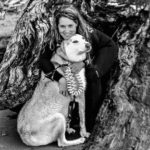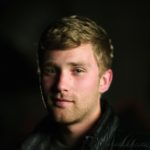Descent of the Refuge

From Molly Booth, Morgan Shields and Chris Morgan, “Descent of the Refuge” brings awareness to protecting the Arctic National Wildlife Refuge through the story of three friends on a backcountry skiing expedition around the Okpilak Watershed, and their journey across the Arctic Refuge coastal plain.
Essay by: Chris Morgan; Film by: Molly Booth and Morgan Shields
Our team of three set off into the Arctic National Wildlife Refuge with two goals. One: to explore and ski some of the highest peaks in the Brooks Range. The other was to travel through and explore an ecosystem steeped in controversy, and experience what this landscape had to offer in its wildness before potentially changing forever.

We flew into the Arctic Refuge from Fairbanks and landed on Lake Okpilak, the gateway to some of the most rugged mountains in the Brooks Range. From there we headed upstream looking to ski some of the impressive peaks that outline the Okpilak Watershed.
As we moved to the upper reaches of the watershed, however, it became clear that the objectives of our trip would have to change. Avalanche conditions lined the flanks of every valley wall, on all aspects and elevations. The ski lines that we had our eyes on were simply not an option.


Because of the avalanche danger, we decided to switch gears and focus more on the explorative aspect of our trip. We went further up the side canyons, traveled to the upper reaches of low angle glaciers, letting our curiosity be our guide. In many ways it became a more poignant trip than we could have imagined; rather than racking up bragging rights because of what we were able to accomplish on skis, we began getting to know this landscape more intimately.
As our food dwindled, we began the 80-mile ski to the nearest village, Kaktovik, where a plane would take us back to Fairbanks.
As we left the mountains and skied out across the coastal plain of the Arctic Refuge, we experienced a vast and open wilderness in every direction. For miles and miles was a landscape sculpted by snow and wind.

It’s incredible to think that during that trip, beneath the snow and ice, we could have passed over polar bears and their newborn cubs denning until Spring. It’s even more incredible to think that in just a few months’ time, these plains would change dramatically, blossoming with green and becoming the calving grounds for tens of thousands of caribou.
The Porcupine caribou herd numbers more than 200,000 animals and undertakes the longest land migration of any land mammal on Earth, specifically to reach these very plains to birth their young.
During the brief but verdant summer, these plains are rich with vegetation and provide a relatively safe and bountiful place for caribou mothers to raise their calves.

There was an extreme push by the previous administration to jumpstart oil development on these calving grounds. Research strongly suggests this would be harmful to the caribou herd and would also greatly impact the Indigenous peoples that rely on this land and these animals. The villages of the Gwich’in people of Alaska and Canada dot the migratory path of the caribou and refer to the coastal plain as “the sacred place where life begins.”
As we skied under the midnight sun, a few weeks before the caribou would arrive, we experienced a combination of gratefulness and trepidation. Grateful to have had the privilege to move through this landscape in its wildness, while at the same time anxious about its future. We left with a hope that by sharing our trip with others, we can create just a little more connection and empathy toward this magical place. The Arctic Refuge is many things: a haven for wildlife; a land sacred to Indigenous peoples; a place to find adventure, but also peace and solitude. It is one of the wildest places left on the planet, and it deserves to stay that way.
Biographies:
Chris Morgan resides near Port Angeles, Washington in the sleepy town of Joyce, about five minutes from the local surf break. When not chasing waves after work, he can be found around the Olympic Peninsula where he loves to ski, mountain bike, paddle and climb. His dogs also keep him busy with their endless demands of running on the nearby trails. Chris has spent time as an environmental educator, guide, ski bum and is currently working towards a Master’s in Education. “Decent of the Refuge” is a film following his first major ski expedition to the Arctic.
 Molly Booth is an outdoor enthusiast who has a passion for experiencing the outdoors, preserving these wild spaces, and capturing their beauty through photography and film. She is a first time filmmaker and is the Director and Editor of the film “Descent of the Refuge.”
Molly Booth is an outdoor enthusiast who has a passion for experiencing the outdoors, preserving these wild spaces, and capturing their beauty through photography and film. She is a first time filmmaker and is the Director and Editor of the film “Descent of the Refuge.”
 Morgan Shields is the Director of Photography and Assistant Editor. Morgan earned his degree from Loyola Marymount University in Los Angeles and has since worked in the outdoor filmmaking industry working in a freelance capacity with industry leaders such as Camp4 Collective and Teton Gravity Research.
Morgan Shields is the Director of Photography and Assistant Editor. Morgan earned his degree from Loyola Marymount University in Los Angeles and has since worked in the outdoor filmmaking industry working in a freelance capacity with industry leaders such as Camp4 Collective and Teton Gravity Research.
The views expressed here are the writers’ and are not necessarily endorsed by Alaska Wilderness League.
